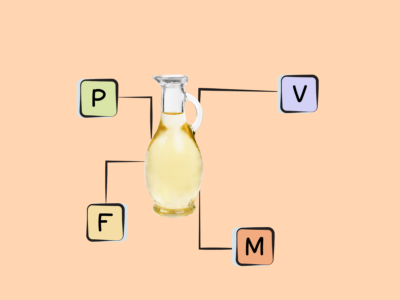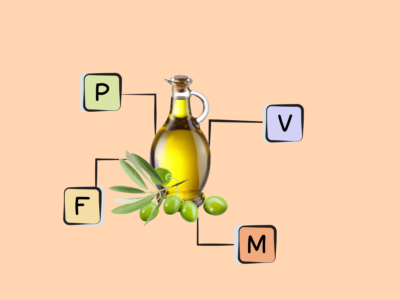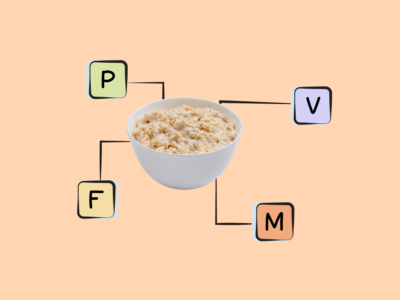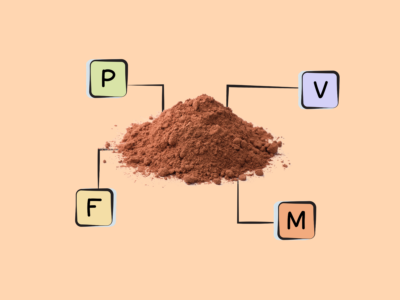Table of Contents[Hide][Show]
Health Benefits of Baking Ingredients

The Nutrivore philosophy appreciates the inherent nutritional value of foods, without labeling any food as good or bad. By extension, no singular food choice is a bad one, and Nutrivore fully embraces treats, cultural foods, and food traditions, without derision. Not every food you eat needs to be the pinnacle of nutrient density—your diet can meet your nutritional needs while including some low nutrient-density, quality-of-life foods.
Added sugars are defined as sugars and syrups that are added to foods during processing or preparation, including sugars and syrups added at the table. And, science shows that it’s important to keep our added sugar intake below 10% of our caloric intake. The scientific rationale for this 10% threshold comes from links to rise in obesity due to increased caloric intake, links to dental caries, links to nutrient deficiencies (through displacement of more nutrient-dense foods), and, most compelling, links to cardiovascular disease. A huge 2014 study showed that consuming 10 to 24.9% of calories from added sugars increased cardiovascular disease risk by 30%, and consuming 25% or more of calories from added sugar increased cardiovascular disease risk by 2.75 times! But, note that staying below the 10% of calories from added sugars threshold doesn’t have any clear detriment to our health, so there’s absolutely room in a healthy diet for some sugar! And, note, this is looking at added sugars, not carbohydrates in general or sugars that come from whole foods like fruit. In fact, eating about 300 grams of whole fruit daily reduces all-cause mortality risk by about 10%!
The healthiest and most nutrient-dense sugar options to use are molasses, maple syrup and sugar, and honey.
In addition, some baking ingredients can be health-promoting! Take chocolate, for example. Dark chocolate (>70% cocoa) contains many beneficial nutrients! A 1-ounce serving is an excellent source of copper and manganese; a good source of fiber, iron, magnesium, and vitamin E; and also contains some zinc, selenium, phosphorus, and vitamins B1, B2, B3, B5, B6, B7 and K. The most important nutrient that chocolate contains though is its very high concentration of phytonutrients with antioxidant activity—including flavonoids, epicatechin, procyanidins, and catechin. In fact, chocolate contains even more flavonoids than wine and tea and a mere one-ounce serving of dark chocolate contains more than the daily amount of polyphenols associated with diverse health benefits!
Research has also shown that cacao has aspirin-like effects, antidiabetic effects, helps reduce parameters of stress, supports maintenance of a healthy body weight, improves cognitive performance, reduces stroke risk, and may even have anticancer properties. Other studies have shown that dark chocolate offers a reduced risk of developing heart disease and provides other beneficial vascular health properties.
A 2017 meta-analysis of prospective cohort studies found a 10% reduced risk of developing heart disease and a 16% reduced risk for stroke among people who ate the most chocolate vs. the least. A Cochrane systematic review from 2017 found that flavonol-rich chocolate and cocoa products can cause a small but significant reduction (2 mmHg) in blood pressure among healthy adults, and a slightly greater reduction in systolic blood pressure (4 mmHg) among people with hypertension. These protective effects of chocolate may be due to its phytonutrient content and its stearic acid (which has been shown to help reduce diastolic blood pressure)! And, a meta-analysis of prospective studies found that people eating moderate amounts of chocolate (less than seven servings per week) had a 14% lower risk of developing heart failure, compared to people eating no chocolate. However, eating 10 servings a week was associated with slightly higher risk (a 7% increase, compared to no chocolate), suggesting more isn’t always better!
The same 2017 meta-analysis above also found that chocolate intake was associated with a reduced risk of developing diabetes (18% lower for those with the highest intake of chocolate), but the greatest risk reduction occurred at two servings per week (25% lower risk), with no protective effects occurring above six servings per week. Other human studies have shown that consumption of flavanol-rich chocolate leads to greater insulin sensitivity, lower blood sugar response, and lower insulin response, while in vitro experiments have shown that chocolate polyphenols can alter glucose metabolism, inhibit glucose absorption in the intestine, and even regenerate pancreatic beta-cells—giving us some plausible mechanisms for chocolate’s anti-diabetic effects. But, it’s possible that the greater sugar and energy intake associated with very high chocolate consumption could offset some of those protective effects, explaining why higher chocolate intake doesn’t seem as helpful for diabetes as it does for other conditions—at least in observational studies.
Clinical trials have produced some promising findings on chocolate’s ability to help us maintain a healthy body weight, too. A meta-analysis of randomized clinical trials—35 in total—found that studies that included at least 30 grams per day of chocolate, for a length of four to eight weeks, led to a significant reduction in body weight and BMI among participants.
All in all, about an ounce per day seems to be the sweet spot (hyuck) for the highest magnitude health benefits.
Nutrivore Is a Game-Changer—This FREE Guide Shows You Why
Sign up for the free Nutrivore Newsletter, your weekly, science-backed guide to improving health through nutrient-rich foods — without dieting harder —and get the Beginner’s Guide to Nutrivore delivered straight to your inbox!

Examples of Baking Ingredients
- cacao and cocoa powder
- chocolate chips
- flour (wheat and gluten-free)
- sugar
- butter
- dried fruit
- maple syrup
- honey
- molasses
- olive oil
- coconut oil
- corn starch
- tapioca starch
- backing powder
- baking soda
Nutrients in Baking Ingredients
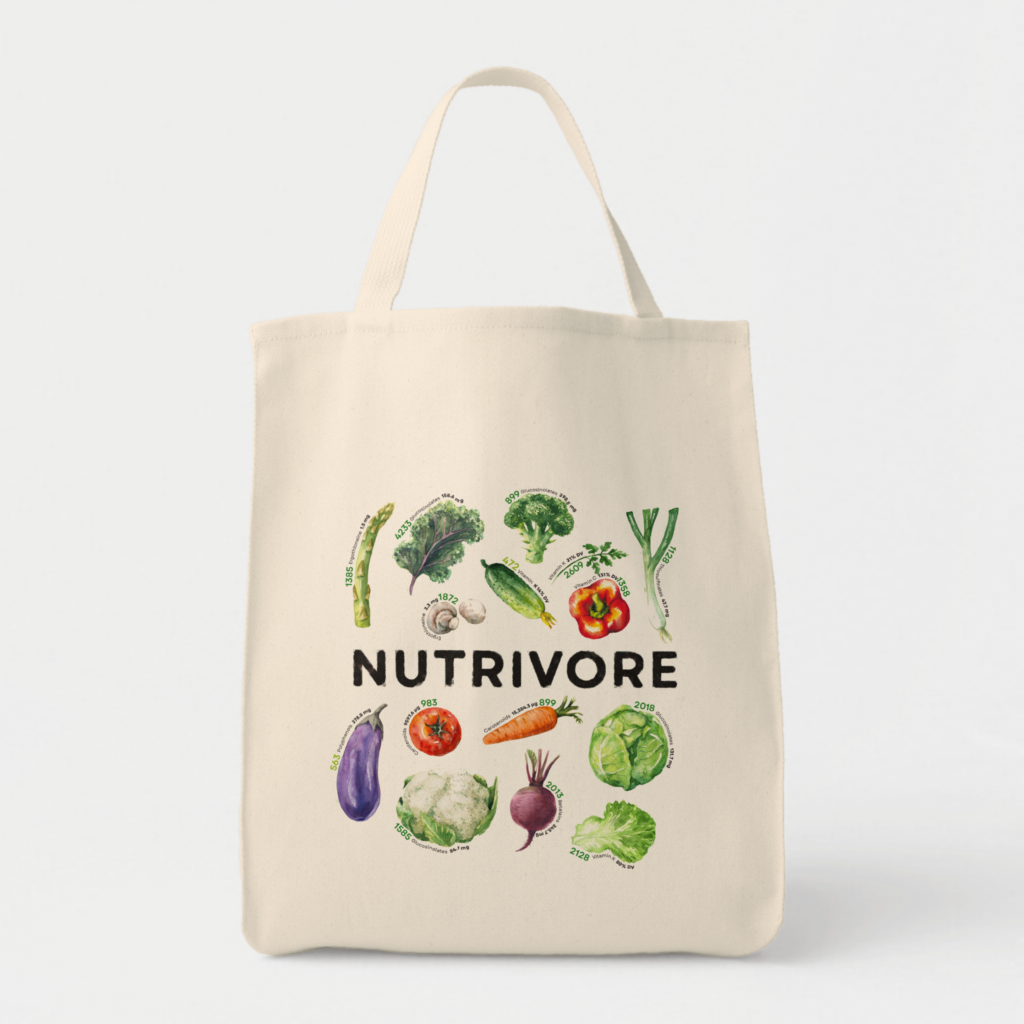
Merch and Household Goods
Check out our collection of practical and nerdtastic T-shirts, totes, and more!
Help me to keep building Nutrivore.com

I’m working on writing more awesome articles on this topic to be featured right here on this webpage. If you’re enjoying the content my team and I have created thus far and would like to see more, you can support our efforts to keep building out this site by joining the Nutrivore community on Patreon!
Plus every month, you’ll gain exclusive and early access to a variety of resources, including a weekly video podcast, a new e-book in a series, nutrient fun factsheet, and more! Sign up now and also get 5 free Nutrivore guides as a welcome gift! Win-win-win!
Citations
Expand to see all scientific references for this article.
Akgun S & Ertel NH. “The effects of sucrose, fructose, and high-fructose corn syrup meals on plasma glucose and insulin in non-insulin-dependent diabetic subjects.” Diabetes Care. 1985 May-Jun;8(3):279-283.
Anderson RA. “Chromium, glucose intolerance and diabetes.” J Am Coll Nutr. 1998 Dec;17(6):548-55.
Anderson RA, et al. “Urinary chromium excretion and insulinogenic properties of carbohydrates.” Am J Clin Nutr. 51:864–868.
Basciano H, et al. “Fructose, insulin resistance, and metabolic dyslipidemia.” Nutr Metab (Lond). 2005 Feb 21;2(1):5.
Bray GA, et al. “Consumption of high-fructose corn syrup in beverages may play a role in the epidemic of obesity.” Am J Clin Nutr. 2004 Apr;79(4):537-43.
Djurhuus MS, et al. “Insulin increases renal magnesium excretion: a possible cause of magnesium depletion in hyperinsulinaemic states.” Diabet Med. 1995 Aug;12(8):664-9.
Johnson RJ, et al. “Potential role of sugar (fructose) in the epidemic of hypertension, obesity and the metabolic syndrome, diabetes, kidney disease, and cardiovascular disease.” Am J Clin Nutr. 2007 Oct;86(4):899-906.
Kozlovsky AS, et al. “Effects of diets high in simple sugars on urinary chromium losses.” Metabolism. 1986 Jun;35(6):515-8.
Lemann J, et al. “Evidence that glucose ingestion inhibits net renal tubular reabsorption of calcium and magnesium in man.” J. Clin Invest. 1970 Apr;75(4):578-85.
Lennon EJ & Piering WF. “A comparison of the effects of glucose ingestion and NH4Cl acidosis on urinary calcium and magnesium excretion in man.” J Clin Invest. 1970 Jul;49(7):1458-65.
Lennon EJ, et al. “The effect of glucose on urinary cation excretion during chronic extracellular volume expansion in normal man.” J Clin Invest. 1974 May;53(5):1424-33.
Rolls, B. J., Effects of intense sweeteners on hunger, food intake, and body weight: a review, Am J Clin Nutr. 1991;53(4):872-8
“Blackstrap Molasses. In-Depth Nutritional Analysis.” World’s Healthiest Foods. Accessed November 5, 2015.
Nath A, et al. “Review on recent advances in value addition of jaggery based products.” J Food Process Technol. 2015;6:4
Secretaria, et al. “Comparison of the Elemental Content of 3 Sources of Edible Sugar.” The Philippine Food and Nutrition Research Institute. Analyzed by PCA-TAL, Sept. 11, 2000. 2003. In parts per million (ppm or mg/li).
Yang Q, Zhang Z, Gregg EW, Flanders WD, Merritt R, Hu FB. Added sugar intake and cardiovascular diseases mortality among US adults. JAMA Intern Med. 2014 Apr;174(4):516-24. doi: 10.1001/jamainternmed.2013.13563.



